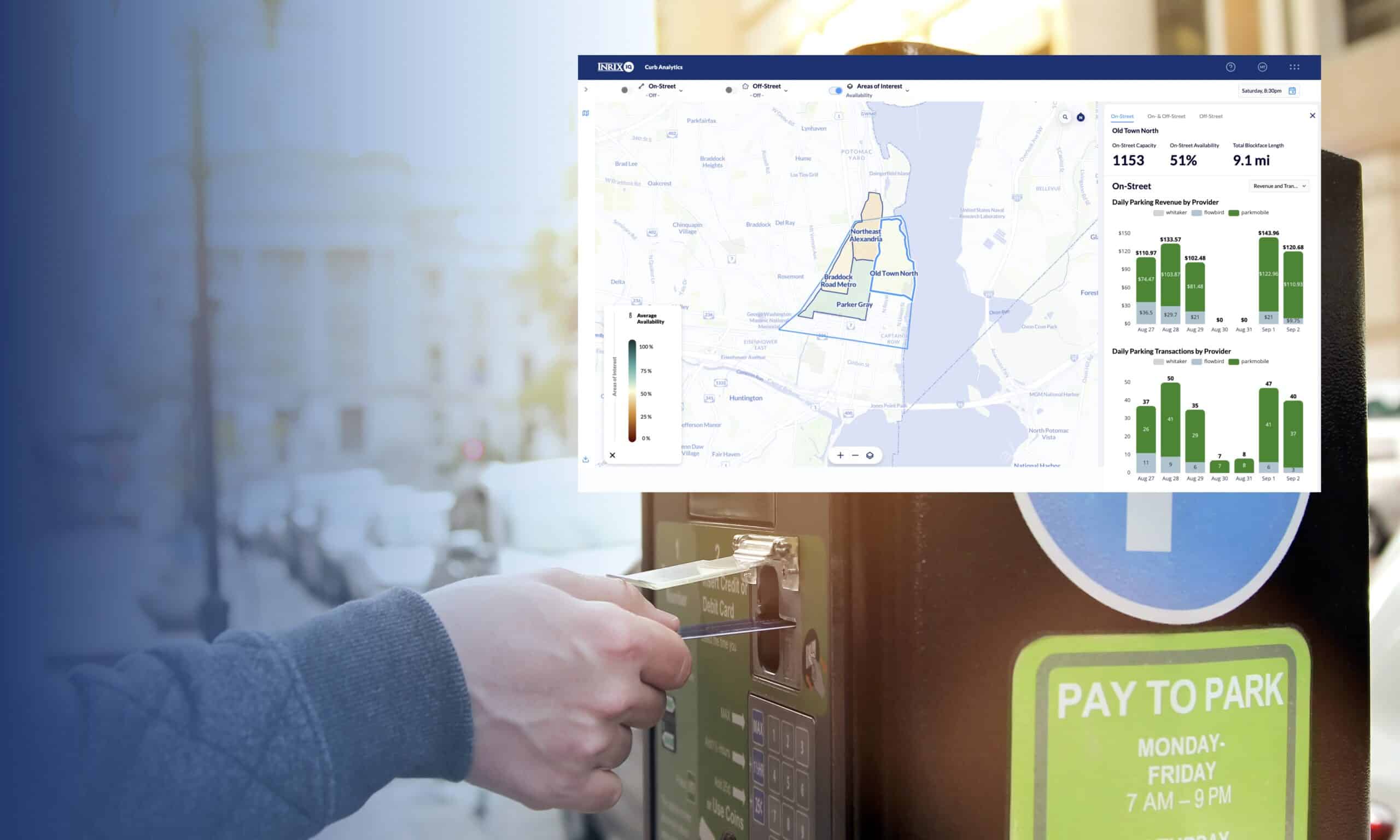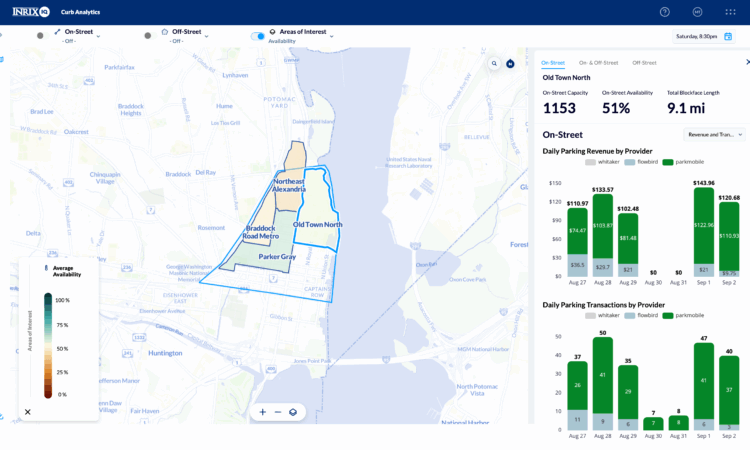
Cities receive parking payment and usage data from each meter or payment provider separately, making it difficult to evaluate whether their pricing and enforcement strategies are working. Individual operator or payments aggregator dashboards may show revenue, but without tying that back to occupancy and broader parking supply information, agencies lack the context needed to make informed decisions.
That’s the problem that our latest feature for INRIX Curb Analytics is here to solve.
The Parking Management Problem: Too Many Dashboards, Not Enough Answers
Cities and parking authorities today face a common set of challenges: they’re drowning in dashboards, juggling siloed datasets, and still missing the bigger picture. Occupancy data sits in one system, transaction and revenue reports in another, and enforcement data somewhere else entirely.
The result? Dashboard fatigue. Agencies waste time stitching reports together instead of acting on insights. And without a holistic view, it’s nearly impossible to answer the questions that matter most: Are pricing strategies working? Is demand balanced across on-street curb parking and off-street lots/garages? Are revenues keeping pace with policy goals?
Introducing Revenue and Transaction Integration
To solve these challenges, INRIX has introduced a powerful new enhancement to Curb Analytics— revenue and transaction integration.
This feature consolidates revenue and transaction data from meters, pay-stations, and mobile payment providers directly into Curb Analytics. By combining revenue data with occupancy insights, agencies finally gain a single, unified view of supply, demand, and financial performance.
Instead of toggling between dashboards or struggling to reconcile siloed data, cities can now see—in one place—how pricing, compliance, and usage are driving revenue outcomes.
Why This Matters
Modern parking management isn’t just about counting cars or tracking revenue—it’s about making smarter, data-driven decisions that balance supply, demand, and financial outcomes. Until now, cities have struggled with siloed data, fragmented dashboards, and static reports that only told part of the story.
Our new revenue and transaction integration feature eliminates those silos by combining parking location/rates/restriction data, supply and demand information, and actual usage/parking revenue data into a single platform. For the first time, agencies can see how pricing decisions translate into real-world outcomes—whether policies are improving compliance, driving turnover, or generating sustainable revenue. With these insights, cities can move from reactive management to proactive strategies like demand-based pricing and optimized enforcement.
Smarter Insights, Real-World Impact
This new feature enables cities to take action with confidence:
- From Data to Demand-Based Pricing
By connecting occupancy and revenue in Curb Analytics, agencies can evaluate how different rates affect turnover, compliance, and revenue. This insight allows them to set pricing that better balances supply and demand—charging more in high-demand zones or times, while keeping prices lower where demand is lighter
- Smarter Enforcement Strategies
Identify underperforming or low-compliance areas, optimize enforcement routes, and improve resource efficiency
- Trends That Drive Policy
Compare daily, weekly, and seasonal trends in both revenue and usage to measure the impact of pricing and policy changes
- Evidence That Justifies Decisions
Use quantifiable, integrated data to defend budgets, secure grants, and support new policy proposals.

We’ve Also Improved Off-Street Occupancy Predictions
Alongside revenue integration, INRIX has also integrated real-time occupancy feeds from off-street garages. These improvements provide measured occupancy for garages and lots where cities have access to feeds, providing high precision information and modeled insights in other areas. These measured occupancy inputs are also used by INRIX to validate and enhance our off-street occupancy model for lots that do not have live feeds, creating a virtuous cycle of improvement. .
Smarter, Unified Parking Intelligence
With these enhancements, Curb Analytics continues its evolution into a parking intelligence application. By consolidating transaction, regulation, and occupancy insights into one system INRIX helps cities cut through dashboard fatigue, break down silos, and make smarter, data-driven decisions to optimize parking supply, demand, and revenue.
To learn more about INRIX Curb Analytics click here or watch the video below.




